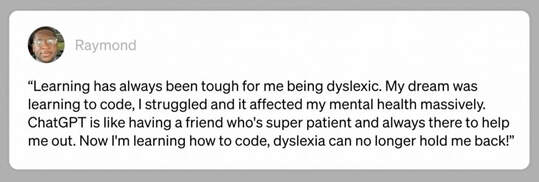When our kids were 5 and 3, my husband Fraser and I were looking to move from our tiny Alexandria duplex to a roomier home. Because I worked in education, and because one of our kids had special needs, it mattered a lot to me where we moved and where they’d go to school.
Fraser will tell you I got a little manic about our neighborhood-and-school search. (He is not wrong.) I researched schools in Alexandria, Fairfax, and Arlington and made a spreadsheet. I visited some of the schools to get a feel for them. The visits enabled us to rule out certain schools, like the one in FCPS where the assistant principal talked about nothing but test scores (at best, only a partial indicator of a great school, IMO). I really liked one of the elementary schools in Alexandria, but the principal told me we couldn’t be assured of attending there, even if we lived nearby, because of the citywide kindergarten lottery program that was in effect at the time. Ultimately, we moved to Arlington and our kids attended McKinley. We settled on the school first and then looked for a house in that attendance zone. In short, we did what many families do: pick a neighborhood based on its schools. Now in my role as a School Board member, I hear from many other community members who apply the same calculus and therefore feel strongly when APS adjusts boundaries or recommends other enrollment changes. Often these changes are intended to help us use our available space more efficiently; for example, to relieve overenrollment at certain schools, or to convert certain sites for alternative uses if it’s in the best interest of the school district as a whole. I attended Fairfax County Public Schools K-12 and both my elementary and high school were converted for alternative uses while I attended them. My elementary became the FCPS Human Resources Department (now it’s an adult education center). My high school became the Thomas Jefferson High School for Science & Technology; my class was the last to graduate before the conversion. At the time, I could not understand why FCPS would choose to close what by all accounts was a well-functioning, successful neighborhood high school. As a high school freshman I spoke to the School Board; as a college freshman, I penned a sharply critical editorial in The Fairfax Journal titled “Business Decisions Run Our Schools.” FCPS closed my high school during an era of declining enrollment in Northern Virginia. I knew this to be so, but still resisted the idea that attendance numbers and dollars should rule the day. I see things a little differently now. As a School Board member, I now can see how facility decisions affect the resources we have available for other things, like staff compensation, extra support and enrichment for students who need it, school safety, and more. Our annual operating budget includes the costs to run all of our schools: staffing, supplies, routine maintenance, utilities, and more. Our capital improvement budget includes costs for major system repair and replacement, as well as renovation and new construction. That entirely separate capital budget is funded primarily through voter-approved bonds (essentially, loans)—but the repayment of that money, or debt service, is part of our regular operating budget. This year APS is paying $65 million in debt service, which is about 9% of our general expenditures (see FY24 budget book, p.540). Three years ago, we paid $59 million to debt service out of the annual operating budget. Five years ago, it was also $59 million, which was 9% of that year’s budget. About 80% of each year’s budget goes to pay for staffing, which means that there’s only about 20% available for everything else. So—9% for debt service (or almost half of our “non-staffing” funds available) is significant. This is why facility management matters. It matters that we maximize use of our available facilities. Whether it happens during my time on the board or after I’m gone, Arlington will need to reckon with a projected 1900-seat surplus at the elementary level within the next decade. What will we do when we have the excess-capacity-equivalent of two and a half elementary schools? If swing space is required for the renovation and reconstruction we know many of our schools need, what’s the best way to obtain it? What factors will we prioritize in making that decision? This is not thinly-veiled commentary aimed at any particular school community or project. It’s simply an acknowledgement that there are some difficult decisions ahead, and that the advocacy of 1980s Mary does not completely match the knowledge I have today. The larger question is how communities like Arlington can build in the “flex” that will help us ride out the highs and lows in student enrollment and can ensure that we locate our schools strategically—as opposed to the situation in my part of the county, where the construction of Discovery and Cardinal in close proximity now mean we have too many seats, and not where they’re most needed. This is why I support the creation of a public facilities master plan that would encompass all of our public buildings—schools, libraries, community centers and more—to plan holistically and expand our thinking about what sites and properties we can tap for different purposes. It’s why we should think more creatively about the kinds of spaces we build and renovate, so that they can serve different purposes in different decades. Groups like the Joint Facilities Advisory Commission can be instrumental in this work, collaborating constructively with APS and County staff. In parallel, though, I hope we will be thoughtful about how we steward our capital funding and acknowledge that “business decisions run our schools”—not in a way that cancels out other considerations, but as a necessary reality.
|
AuthorMary Kadera is a school board member in Arlington, VA. Opinions expressed here are entirely her own and do not represent the position of any other individual or organization. Categories
All
|



 RSS Feed
RSS Feed
